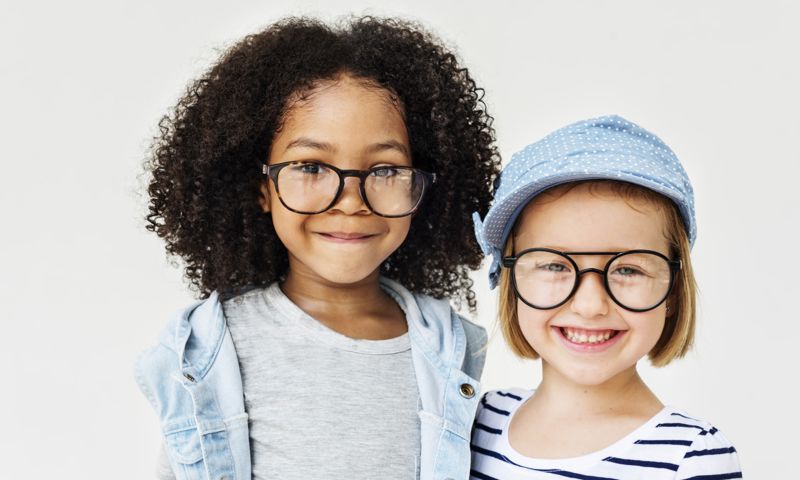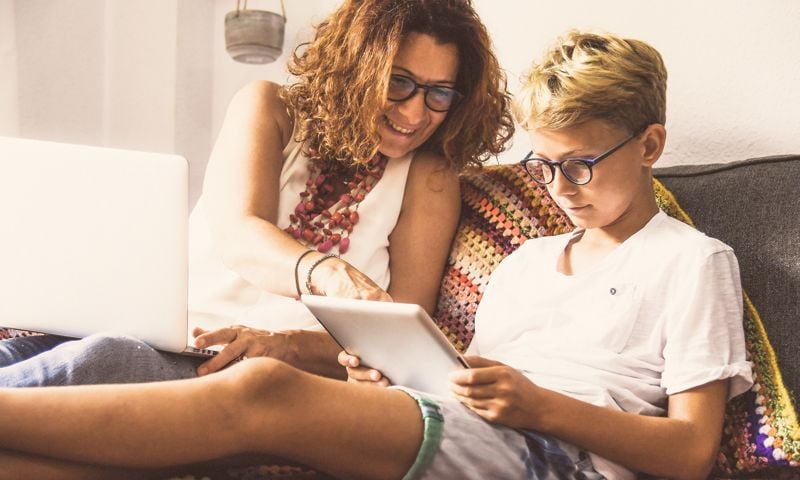We all want our kids to transition smoothly back to school and thrive when they are there. A simple step that may prevent some educational and developmental issues is the early detection of vision problems. Whether your child is starting primary school or heading into their final year, make an eye test part of your regular back to school checklist.
Why is vision important for children?
Vision or eyesight is such an important sense. It provides a large amount of the information we use for learning and education, as well as our ability to navigate our environment.
Good eyesight can help children more easily reach their developmental and educational milestones.
Vision issues in childhood may impact every aspect of their life including learning, confidence and social interactions.
Parents often overlook getting their children’s vision tested, despite it being relatively easy to do.
What are the symptoms of poor vision in children?
Sometimes it is difficult for kids to realise they have an eye issue. They don’t know what clear vision “looks” like. However, there may be some signs of a vision issue that parents or teachers can pick up on:
- Preferring to sit close to the whiteboard, television or teacher
- Delayed or dislike of reading
- Difficulty catching balls or clumsiness
- Holding books close to their face
- Rubbing eyes or covering one eye to look at things
- Complaints of headache or blurry vision
The good news is most vision impairments in children can be corrected.
What does a children’s eye test include?
Optometrists can perform eye tests for children of any age, even new born babies. The earlier that eye problems are detected and treated, the higher chance of a better outcome for the patient.
Children can often feel a little anxious about their first eye test. You can help to ease their concerns by explaining why eye tests are important and letting them know what to expect.
A comprehensive eye test takes around 30 minutes and includes:
- Distance and close vision
- The movement and function of the eyes independently and together
- Colour vision
- Developmental stage of the eye
- Eye health
Medicare subsidises the cost of eye tests performed by an optometrist. Any additional costs, such as for eye health photography or prescription glasses, will be discussed at the time of your appointment.
What are the treatment options for vision issues?
Optometrists treat eye issues in different ways depending on the issue that is found.
Prescription glasses may not always be needed but instead, children may be instructed through lifestyle and behavioural changes or even eye drops. Lifestyle and behavioural changes include:
- Visual hygiene (making sure you have appropriate lighting and take regular screen breaks)
- Vision therapy (such as eye exercises)
- More time spent outdoors
How does time outdoors affect vision?
Myopia (short-sightedness) is a condition where the eyeball is longer than normal, resulting in blurred distance vision. Signs of myopia can show as early as a few years old and generally increases in severity as the patient gets older.
Around the world, myopia is becoming more and more common. The prevalence of myopia is expected to increase to 50 per cent of the world's population by 2050.
The contributing factors to myopia include more time spent indoors and the increase in screen-based activities. Evidence shows that treatments, including increasing outdoor time, can prevent or halt the progression of myopia.
What can I do now?
Now is a great time to have children’s eyes tested. It helps your child to have the best start to their school year, right from the beginning.
Book in at GMHBA Eye Care for a test with one of our kid-friendly optometrists.
Back to school checklist:
- Uniform
- School shoes
- Booklist
- Eye test



